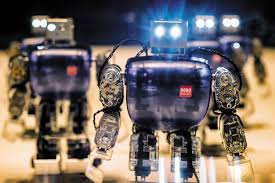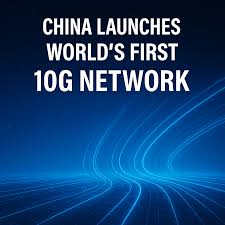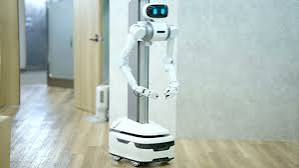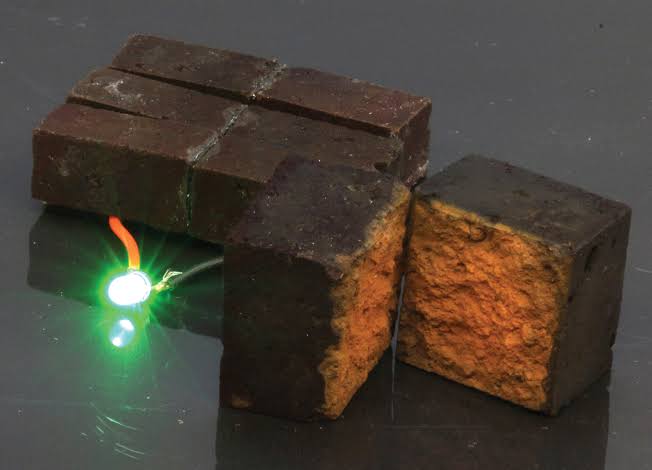 Emerging Tech
Emerging TechThis historic revision to the Intelligent Robots and Road Traffic Acts, enacted in 2025, positions South Korea as a global leader in robotic integration, paving the way for a transformative urban landscape where automation is no longer confined to factories or controlled environments but is an active participant in daily life.
 Industry Insights
Industry InsightsFrench medtech startup Robeauté has secured €27 million ($29 million) in funding to advance its innovative neurosurgical microrobot. This rice-sized device, designed to navigate the intricate landscape of the human brain with unprecedented precision, is poised to transform brain surgery by offering a safer, less invasive alternative to traditional methods.
 Innovative Tech
Innovative TechFrom wearable devices to soft robotics, the need for batteries that can bend, stretch, and adapt without sacrificing performance is driving cutting-edge research. Enter the water-based hydrogel lithium-ion battery, a groundbreaking development from researchers at Georgia Tech and UC Berkeley.
 Tech Trends
Tech TrendsUnveiled in late 2024, this ultra-high-speed network, developed through a collaboration between Huawei and China Unicom, is poised to redefine connectivity standards worldwide. With download speeds reaching an astonishing 9,834 Mbps, upload speeds around 1,008 Mbps, and latency as low as 3 milliseconds, China’s 10G broadband is not just an incremental upgrade—it’s a technological revolution.
 Industry Insights
Industry InsightsBYD’s ascent to the top is a testament to its aggressive pricing strategy, diverse product portfolio—including hybrid offerings—and rapid global expansion into markets like Europe, Brazil, and Southeast Asia. This historic milestone signals a new era of competition in the EV industry, with profound implications for manufacturers, consumers, and the global push toward sustainable transportation.
 Emerging Tech
Emerging TechUnveiled as the world’s first “solar super-panel,” this innovation promises to generate the equivalent energy output of 20 nuclear reactors by 2040, redefining how renewable energy is produced and consumed. Lightweight, flexible, and highly efficient, PSCs are set to transform urban landscapes, address space constraints, and position.
 Tech Trends
Tech TrendsLaunched on April 22, 2025, in Yizheng, Jiangsu Province, this monumental roll-on/roll-off (ro-ro) vessel is not just a marvel of engineering but a bold statement of BYD’s commitment to sustainable logistics and global market expansion. Measuring 721 feet in length, 123 feet in width, and boasting 16 decks, the BYD Shenzhen is set to redefine maritime transport with its cutting-edge environmental technologies and unparalleled capacity.
 Innovative Tech
Innovative TechThis historic milestone, achieved on April 9, 2025, marks the integration of Ainos’ proprietary AI Nose technology into ugo’s advanced robotic platform, introducing a new class of intelligent machines capable of perceiving their environments through olfactory senses.
 Emerging Tech
Emerging TechThis bio-inspired material, drawing from the intricate structure of plant stems, achieves unprecedented thermoelectric performance, boasting a Seebeck coefficient of −40.5 mV/K and a figure of merit (ZT) of 6.6×10⁻². Set to be showcased at SynBioBeta 2025, this innovation not only promises to revolutionize smart city infrastructure but also addresses the concrete industry’s significant environmental footprint.
 Emerging Tech
Emerging TechCluely markets itself as an AI tool to “cheat on everything,” sparking fierce debates about ethics, innovation, and the future of merit-based systems. This is the story of Lee’s audacious journey, the technology behind Cluely, and the broader implications for AI in education and professional spheres.
 Artificial Intelligence
Artificial IntelligenceTiangong Ultra, developed by the Beijing Humanoid Robot Innovation Center in collaboration with UBTech and backed by tech giant Xiaomi, clinched victory in a field of 21 bipedal robots, finishing the course in 2 hours, 40 minutes, and 42 seconds.
 Emerging Tech
Emerging TechThis remarkable invention, crafted from spare parts of old televisions and mobile phones, not only makes calls using radio frequencies but also doubles as a multifunctional device with features like a radio, television, light bulb, fan, and charging socket.
 Artificial Intelligence
Artificial IntelligenceThis blog post explores the features, implications, and broader context of Thailand’s pioneering AI police robot, delving into its potential to reshape law enforcement while addressing the ethical challenges it raises.
 Innovative Tech
Innovative TechEnter DDL-920, an experimental drug developed by researchers at the University of California, Los Angeles (UCLA), that has sparked excitement for its potential to revolutionize stroke rehabilitation.
 Emerging Tech
Emerging TechThis monumental breakthrough in regenerative dentistry, announced in April 2025, could fundamentally transform how we approach dental care, potentially rendering traditional fillings and implants obsolete.
